Bra Support Comes of Age: The history of the bra, 1920-1930 *
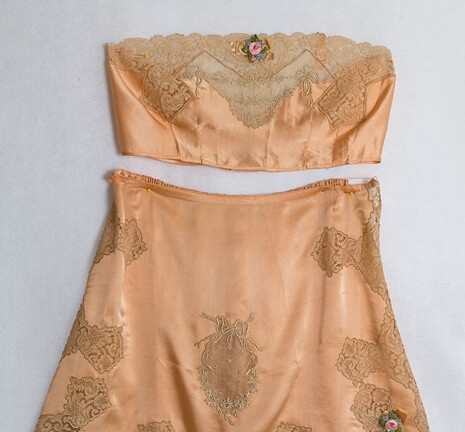
by Carol Wood, First published for the November/December 2013 issue of Finery
“The history of the chest is as much about its suppression as it is about its augmentation”
Harold Koda Extreme Beauty: The Body Transformed
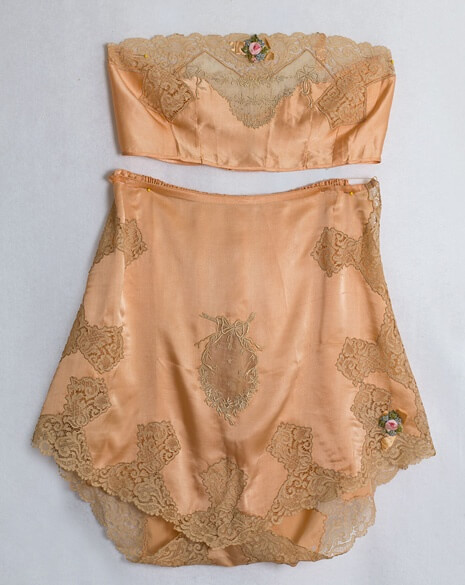
Underwear and outerwear tag team change and for the brassiere this is no exception. Women’s under-fashion evolved from the constraining corset to the flapper’s bandeau and then the starlet’s bullet bra. Innovations, however, are not sudden events, but the result of layers of experiments over time that, if persistent and widespread, result in permanent change. The history of the bra in the 1920s and 1930s is just such an example. Beginning as early as the start of the 19th century, the bra’s development is exemplified by false starts, dead-end patents, and a lot of sore mammaries. And then there were the successes; the materials that didn’t reek, and the items that didn’t end up around one’s neck while dancing ‘til dawn. Somewhere in between, there is a hugely complex story full of intrigue, competition, and some very satisfied customers.
The 1920s Ideal: La Garçonne
The ideal of the decade was a wisp of a girl with tiny, if not invisible, breasts under a sheath garment. This narrow silhouette was a natural progression from the narrowing skirt and blouse of the teens with one big surprise for this decade: Legs! Within months, skirts rose from ankles to knees for the first time in memorable history and they were THE sensation. Focus was diverted from a buxom torso, down the body and to shapely legs adorned with fine silk stockings and fabulous footwear. Clearly, not every woman had the legs or the torso to pull off 1920s fashion successfully. So, how did the aspiring garçonne, or flapper, achieve “it”?
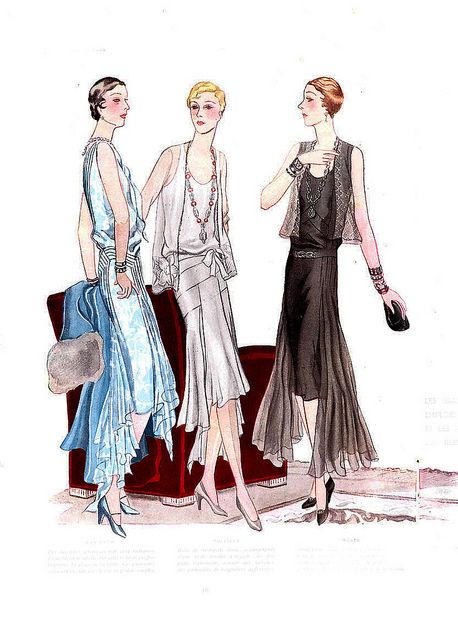
Heading into the 1920s, the bra was not a garment of much support. Its sole purpose was to contain and restrict breast movement. “For a long stretch, from the 1860s to the 1930s, dozens and dozens of inventors struggled with the same momentous design challenge: how to free up the waist to give women the ability to move easily while also supporting and shaping their busts” (Riordan, 69.) For those who wanted it, there was at last a liberating undergarment for the torso that could be worn on its own, and a woman could still feel respectable. Not only did the fashions of the time cry out for this freedom of movement at the waist, women’s activities did too.
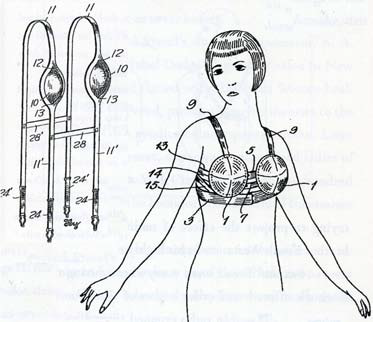
Nearly 200 patents for bras and corselettes were registered between 1918 and 1929. The biggest advances in the business were the beginning of sizing and selling to a wider clientele. Bras were manufactured in soft tones, such as peach, tea rose, and pale green, since most clothes were still laundered by hand and white was not as easy to keep clean as colored undies. Rayon virtually democratized lingerie in the 1920s: the “appearance of luxury was for the first time available to women of modest means” (Fontaine, 104.) Innovative wash-resistant dyes resulted in easy and more frequent laundering, but also allowed women to be more active in their colorful new underthings without fear of colors running when they did.
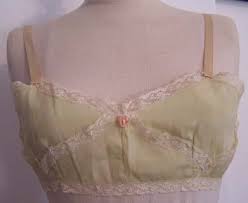
Postal service delivery got a boost in 1914, which meant fashion magazines (on the rise themselves) could bring images of fashionability along with mail ordered bras. Retailer expansion and an increase in automobile sales facilitated bra purchases; however, mail order was the cheapest option: a bra sold for well under $1. An office clerk could afford a bra or two that she could launder more often than the stodgy old corset, especially with the proliferation of wash-resistant dyes. Or, there were women like my grandmother and great aunts who expended no cash on bras, but bound their breasts in strips of old sheets!

And that OTHER reason to switch to a bra? “The New Woman could smoke, drink, vote, and even hold down a job. Moreover, she was sexually independent as never before. . . . And what did the bra provide for the veriest schoolgirl that a corset did not? Easier access during the ‘petting parties in the purple dawn.” (Riordan, 91) The 1920s was the decade of decadence: an era of sex, drugs, and more social freedom than women had ever experienced. With the right to vote for women enacted in 1920, more U.S. women worked outside the home, and life moved fast. Thanks to the introduction of the diaphragm in 1916, women had greater access to contraception information. And, to add to the breakdown of any remaining inhibitions, Prohibition made alcohol an attractive forbidden fruit. Combine this with the use of automobiles to access bootleggers and retailers, women had a “bedroom on wheels.” (Riordan, 91)
Support in the 1930s: And Then There Were Two
“A number of technical innovations in materials took place in the 1930s and 1940s, including man-made fibers and durable elastics. These new possibilities coincided with the fashion world’s impulse to shape the bust. The rapid shift from the bust suppression of the 1920s to the unencumbered and pendant bosom of the 1930s was immediately followed by a dramatic introduction of brassieres with structured support.” (Koda, 59)
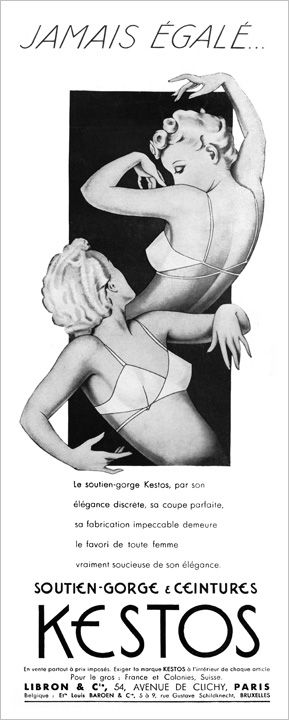
If freeing the waist and flattening the bust was the ideal of the 1920s, uplift and separation of the breasts characterized the 1930s bra. Designers had begun to focus attention on the upper torso by way of collars, drapery, pleating and tucking at the neck. (Farrell-Beck, 61) At the beginning of the decade, hems had dropped significantly, drawing attention away from legs and making way for a renewed interest in raising up the bust.
Despite high unemployment, bra sales soared. The 1935 Sears, Roebuck sold bras mail order for as low as $.14 compared to a $4 to $6 corset (in context: day dresses sold for $1 to $5.) In trying economic times, it was even more important to look well groomed which a bra could do for comparatively little. Physical activity increased with the heyday of dance halls in the 1930s promising the Lindy Hop and the Quick Step. Clothing had to keep up with these activities and that meant garments had to move with the body.
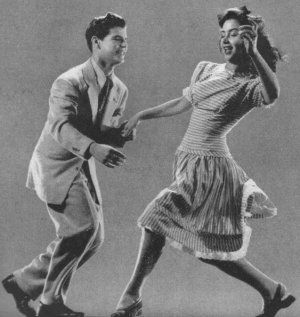
Interesting innovations took the stage as both day and evening wear required soft, yet strong support. Manufactured knits were used to
create both outer and underwear. Circular knitting machines were able to create girdles without bulky fasteners. However, the improvements in rubber production begun a century earlier with Charles Goodrich’s vulcanization process turned rubber into a “wonder product” that revolutionized the clothing industry. Although rubber is found in shape wear as early as the teens, it wasn’t until the 1930s when bras and girdles were manufactured with Lastex. This new rubber was extruded into tiny filaments wrapped in cotton, silk, or rayon, which meant the wearer would not sweat quite so much and the product was comfortable with successful elastic recovery. Then came nylon. It was first used commercially in 1938 as the bristles in toothbrushes and then, most famously, as stockings in 1940.
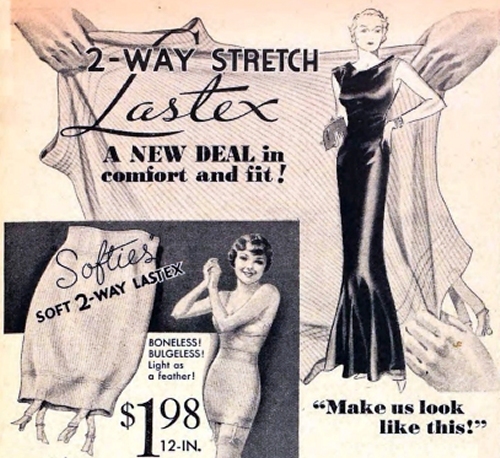
Nylon was used for bras and other underclothing. as well. In 1932, cup sizing began: A, B, C, D cups and bands 34”, 36”, 38” etc.; and, in 1934, “Whirlpool stitching” stabilized the cups with concentric rings of topstitching. (Farrell-Beck, 66) The elimination of the seam under the cup and the use of bias fabric allowed the tension of the bust in the cup to do the work thereby producing a “comfortable brassiere that adapted to the size and shape of each breast,” and optimizing the decade’s lift-and-separate theme. (Farrell-Beck, 79)
Recreating the Look: Resources and Suggestions
Wearing period undergarments can enhance the actor’s and re-enactor’s experience. For some silhouettes, it’s absolutely necessary to don appropriate underwear, such as corsets for the Renaissance, bustles for the 1870s, and a bullet bra for the 1950s. Even the 1920s flat-chested flapper silhouette requires some work, since today’s bust position – high and enhanced – ruins that look.
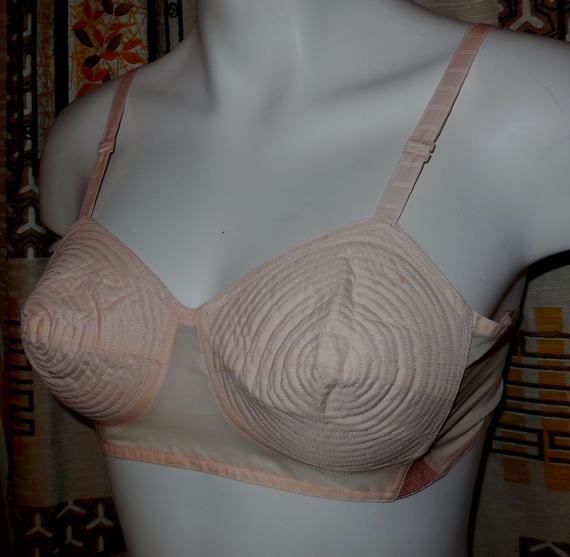
If you would like to try your hand at recreating a period bra from the 1920s or 1930s, there are a few reference resources and patterns. Countryman and Weiss Hopper [1] include pattern drafts of period bras and corresponding drawers and slips. Modify a commercial pattern for a bra / bikini top based on the Countryman and Weiss Hopper patterns; or recreate a favorite bra using the Burgess [2] technique and modify the look of that bra based on period patterns or images. You can buy period sewing patterns, but know that most 1920s and 1930s sewing patterns are available in one size per envelope and have minimal instructions.
Easiest for the 1920s is to don a sports bra that will achieve the bound bust appearance. The 1930s look is somewhat easier, since separation and uplift are still the order of the day. Today’s brassiere technology enables bras that can pass as period ‘30s bras and still feel comfortable and secure.
*Excerpted from the author’s original article in Virtual Costumer, vol. 8, no.3: 14-23 (2010). http://www.siwcostumers.org/newsletterarchive/VirtCostV8-I3-2010/VirtCostV8-I3-2010_15-bra.pdf
Sources
1. Countryman, Ruth S., and Elizabeth Weiss Hopper. 1998. Women’s Wear of the 1920’s with complete patterns. Players Press: 178-190, ISBN 0887346545; and Women’s Wear of the 1930’s with Complete patterns. 2001. Players Press: 191-193, ISBN: 0887346758.
2. Burgess, Lee-Ann. 2000. Making Beautiful Bras. R.O. Burgess Pty Ltd, ISBN 0958610967
References: Secondary Sources
1. Farrell-Beck, Jane, and Colleen Gau. 2002. Uplift: The Bra in America. University of Pennsylvania Press, ISBN: 0812236432
2. Fontanel, Béatrice. 1997. Support and Seduction: A History of Corsets and Bras. Abradale Press, ISBN: 0810982080.
3. Koda, Harold. 2004. Extreme Beauty: The Body Transformed. Metropolitan Museum of Art, ISBN: 1588390144.
4. Riordan, Teresa. 2004. Inventing Beauty: A history of innovations that have made us beautiful! Broadway Books, ISBN: 0767914511.


Lucinda
Thank you for your article on the 1920, 1930s bra. I’ve never sewn a bra before but I do want the shape of it for 1930s, 1940s. Is there a pattern that I can use? Thank you!